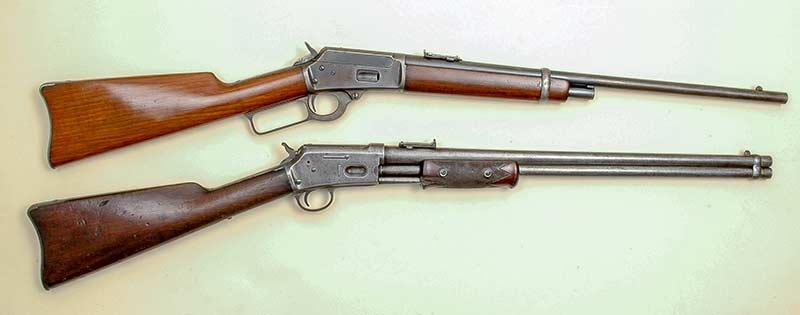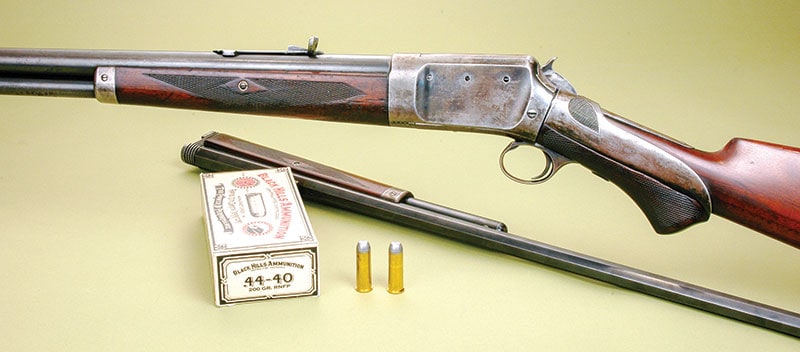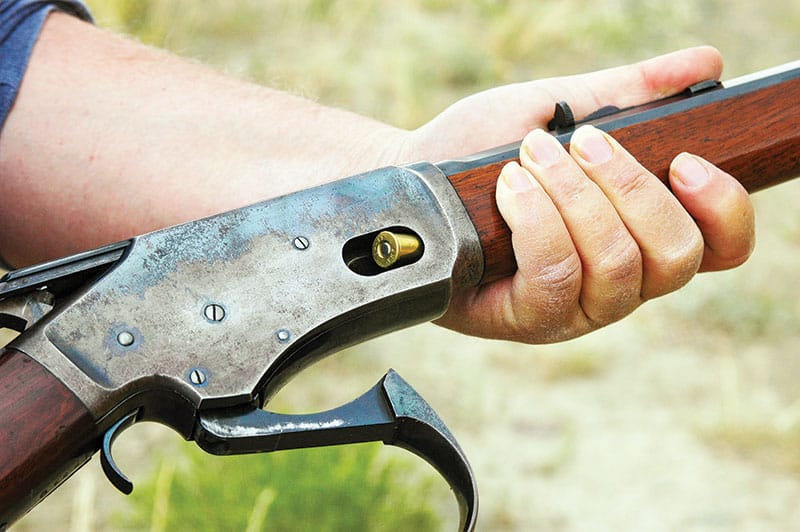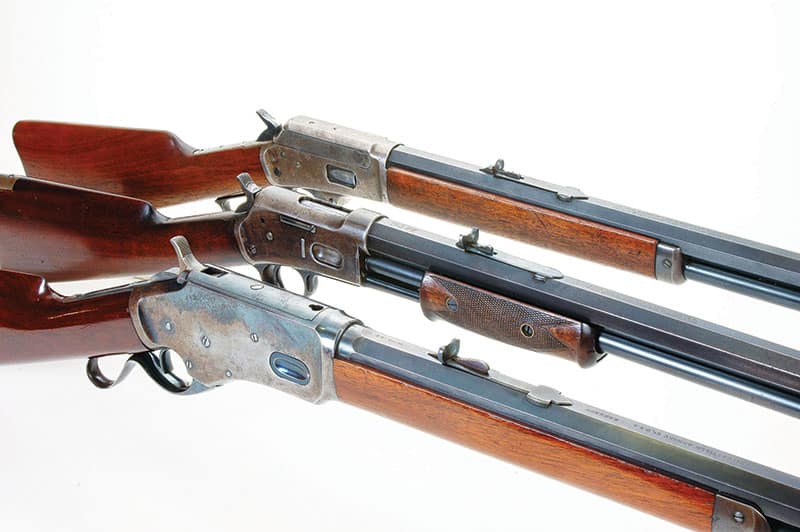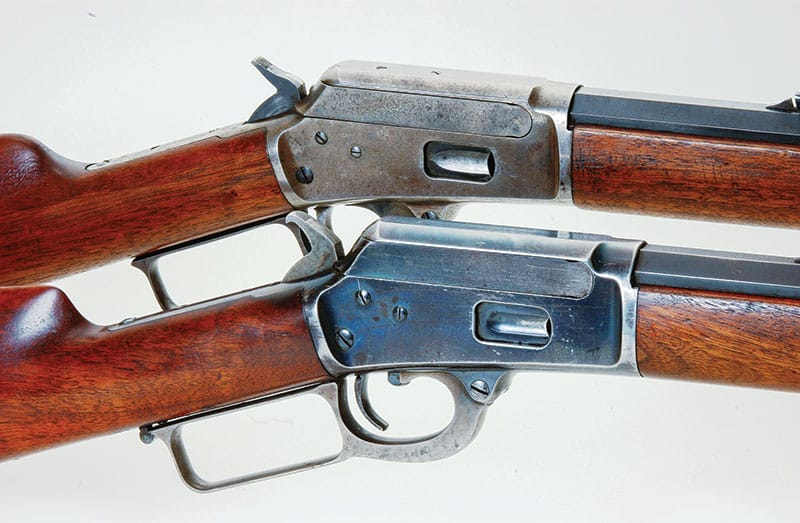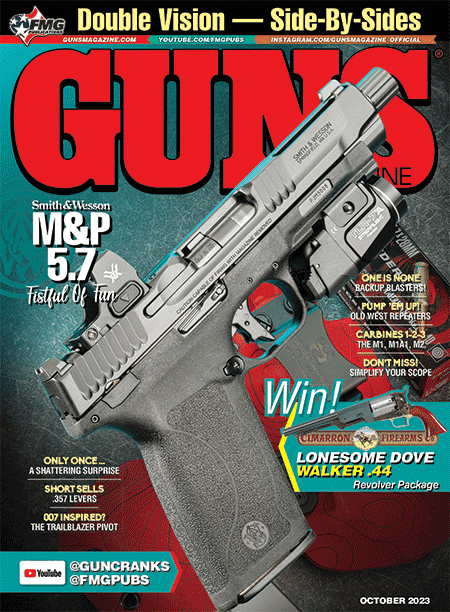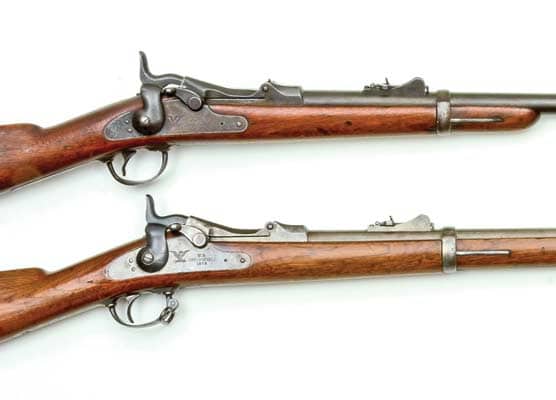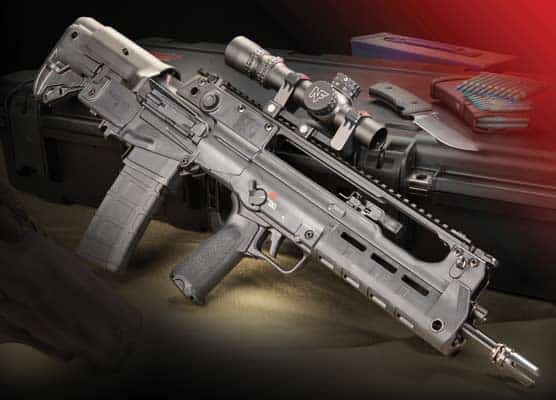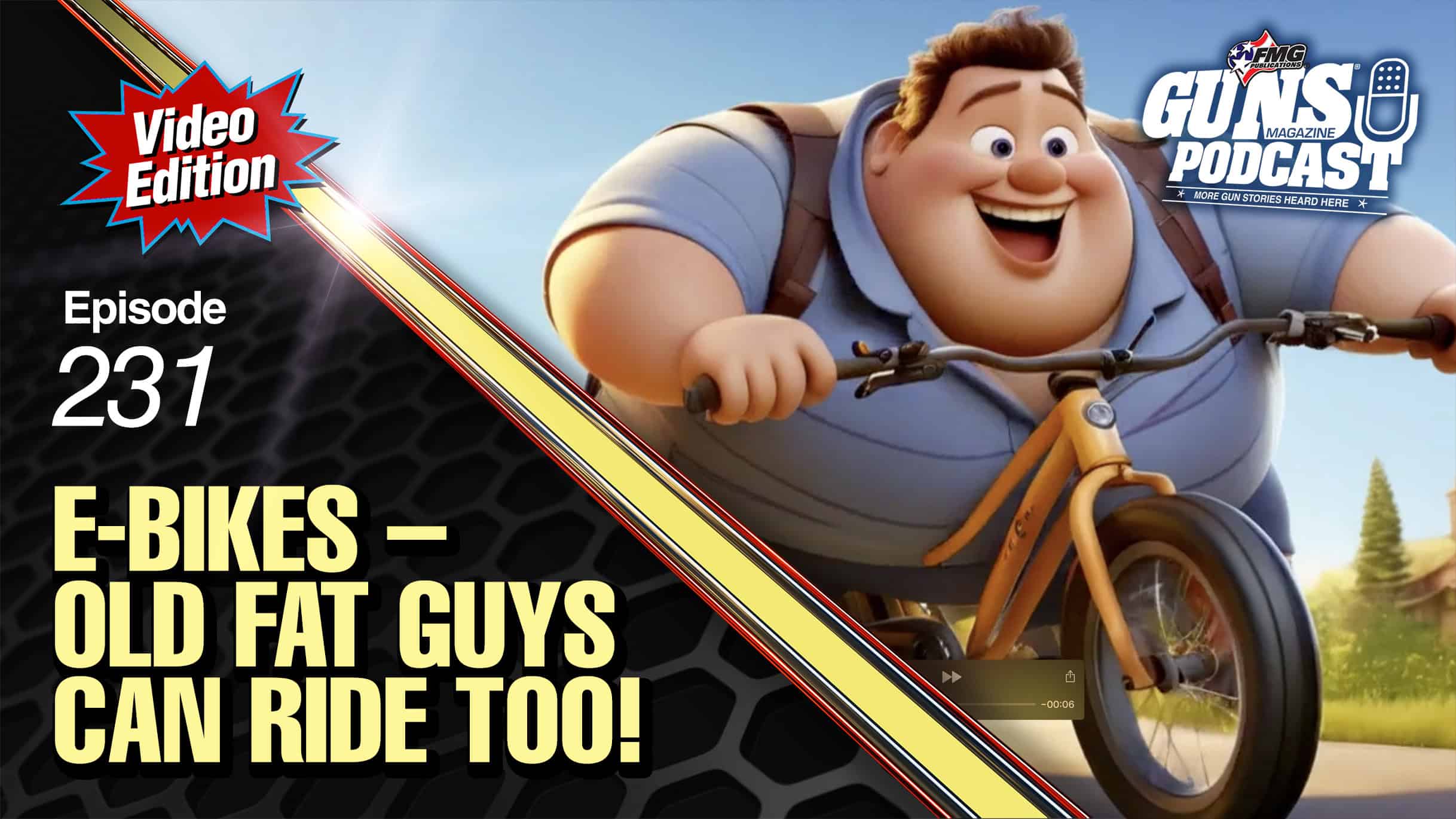The Other Old West Repeaters
Winchester Wasn't The Only Game In Town!
Without a doubt, TV and movie portrayals of the American West have caused Winchester lever guns to become iconic. I’ve bought into this and still do, although I’m aware Winchester Repeating Arms had rivals even in their heyday of the late 1800s. Names such as Marlin, Burgess, Kennedy, Bullard and even Spencer must be acknowledged. Men wearing those monikers not only designed some outstanding repeaters, but also got them into production.
Other Names
Spencer even predated Winchester by a few years. Spencer rifles and carbines were an entirely different ball game from Winchester. They indeed were lever-actuated but whereas all other Winchester rivals held cartridges in tubular magazines beneath barrels, Spencer rifles and carbines were loaded through a tube in the butt plate. Spring pressure pushed the rounds forward through the buttstock and fed them into the chamber as the lever was first lowered and then raised again. However, where Winchesters and other lever guns had their hammers automatically brought to full cock by their levers’ cycle, Spencer hammers had to be manually cocked.
If readers would like to delve deeper into Spencer use in the pioneer days, I strongly recommend a book titled The Cheyenne War: Indian Raids on the Roads to Denver 1864-1869 by Jeff Broome. This book contains numerous accounts of both military and civilian use of Spencers in Nebraska, Colorado, Kansas and Wyoming raids and battles. One standing out in my mind is the time some railroad workers left their Nebraska station armed with Spencer carbines but didn’t bother to load them. Four of the five workers paid with their lives for the mistake and the survivor lost his hair.
Winchester’s repeating rifle rivals came too late for most of the Indian Wars. Marlin marketed their first lever action as the Model 1881. I owned one for several years and used it for the .45-70 black powder shooting in my book Shooting Lever Guns of the Old West. It was a heavy beast of a rifle with a 28″ barrel but it was the first repeater to truly rival the Sharps, Remington and Ballard single shots being used by professional bison hunters — Winchester’s Model 1876 actually did not. It was also offered chambered for the .40-65 round.
What is noteworthy is Marlin beat Winchester in offering these formerly single-shot-only cartridges in a lever-action repeater. Winchester didn’t get a .45-70 caliber rifle out until their Model 1886. Marlin’s lever guns received ammunition through loading gates on the right side of the action, storing it in a tubular magazine under the barrel. Their primary difference in function from Winchester lever guns is the Marlin ejected empty brass also from the actions’ right sides whereas Winchesters tossed their empty cases straight up.
Marlin also started offering pistol-cartridge lever guns with their Model 1889 and again with their Model 1894. Of course .44-40 was the most popular but they also offered .38-40 and .32-20. Here’s an idea I cannot actually document — I think Marlin promoted the double-digit names for the three mentioned rounds. Winchester always caliber stamped their Models 1873 and 1892 as .44 WCF, .38 WCF and .32 WCF while Marlin stamped theirs .44-40, .38-40 and .32-20.
Frisky Colt
Colt had no intention of being left out of the repeating rifle market. Based on patents by the very prolific designer, Andrew Burgess, Colt offered a traditionally styled lever action .44-40 for a few years. About 6,400 were made before production ceased in 1884. I’ve only seen and shot one Colt Burgess. It was a beautifully crafted rifle. Interestingly, Uberti of Italy has replicated the Colt Burgess for Cimarron Arms. There is a myth saying Colt ceased making the Colt Burgess because Winchester threatened to start making revolvers. I don’t buy it for a minute.
My evidence? The next year after ceasing production of the Burgess lever gun, Colt introduced their very famous pump-action Lightning. These pump actions were built in three frame sizes — small size for .22 rimfire, medium for .44-40, .38-40 and .32-20, and a large size for 40-60 (aka .40-65), .45-60 and .50-95. The latter two rounds were borrowed from Winchester’s efforts with their Model 1876.
Lighting Round
Over the years I’ve owned several Marlin and Colt lever guns of the late 1800s. At one of the big Las Vegas antique gun shows early on the first day I spied two Colt Lightnings on a table. Both were .44-40 so again I asked for a price on them together. A few hours later a fellow stopped by my table and made me an offer for one Lightning equal to what I’d paid for both. He got it.
He then showed me a marking indicating it had been owned by the San Francisco Police Department. I was happy for him because I’d already deduced the one I was keeping was one of the rare “baby carbines.” In other words, its weight had been scaled down to less than 5 lbs. to make it easier on horses. Together with it, I had a Marlin Model 1894 .38-40 Baby Carbine. They were fine shooting carbines but both were sold to fund my quickly growing military collection.
Although I’ve never owned a large-frame Colt Lightning, a fellow loaned me his .50-95 few years ago. It was what collector’s call a “cat gun.” Those were fast-repeating American rifles of .50 caliber bearing British proof marks. Such were imported into their colonies in Africa and India for lion and tiger hunting. Every time I pulled the trigger on the .50-95, with rounds carrying up to 85 grains of black powder, my attention became focused on my right shoulder!
There are two other little known Old West repeaters with which I’ve had some shooting experience. The Kennedy is simply another version of the same plot, so to speak. It is lever-actuated with a tubular magazine beneath the barrel, loaded by stuffing cartridges through a port on the receiver’s right side. Shooting a friend’s .44-40 Kennedy, I couldn’t see where it offered any advantages over a Winchester or Marlin lever gun.
House of Burgess
The Burgess “wrist pump” was a different matter. Most of us shooters have fired pump shotguns wherein the strong hand holds the gun at stock’s wrist while the pump is actuated with the weak hand supporting the forearm. Reverse this in your mind for a Burgess “wrist pump.”
The weak hand still supports the forearm but does nothing else. The strong hand on the wrist moves the slide to pull the action rearward and forward. It’s the dickens to get used to, but it darn sure works well once the shooter can get his hands to work correctly.
Another great difference is my friend’s Burgess “wrist pump” rifle is a take-down model. Instead of Winchester’s method of screwing loose the magazine tube and twisting the barrel and receiver 90 degrees, with the Burgess the release is pressed and the two halves come apart in a vertical manner. In other words, one part is pulled up while the other is pulled down. This is made possible by U-shaped threads.
There were other repeater rifles and carbines developed in the late 1800s such as the Evens, which could hold an amazing 30+ cartridges, and the massive but beautifully crafted Bullard. I’ve not included them here for two reasons. One is that I’ve never shot either and the second reason is I don’t have photos of either. Maybe someday.…
Most readers of western novels or western movie watchers — I’m both — might think viewing a hardware store shelf circa 1880 to 1900 might show only a large array of Winchesters. It’s simply not so.
